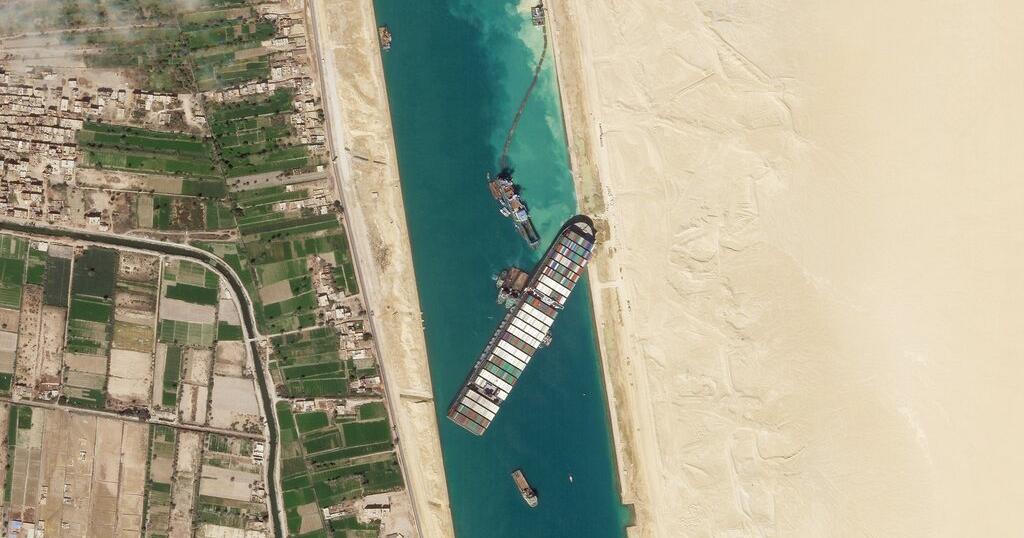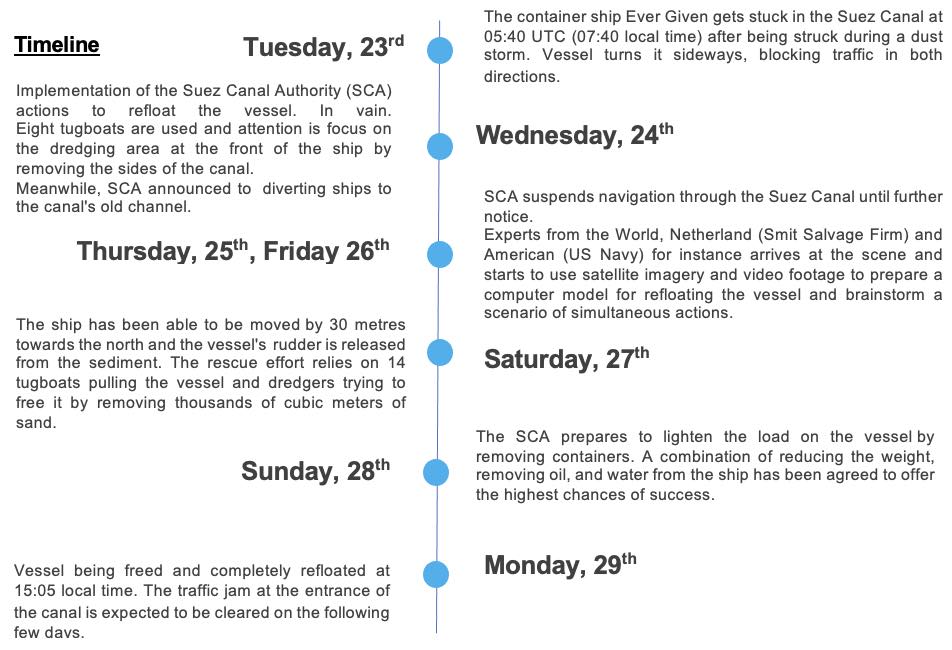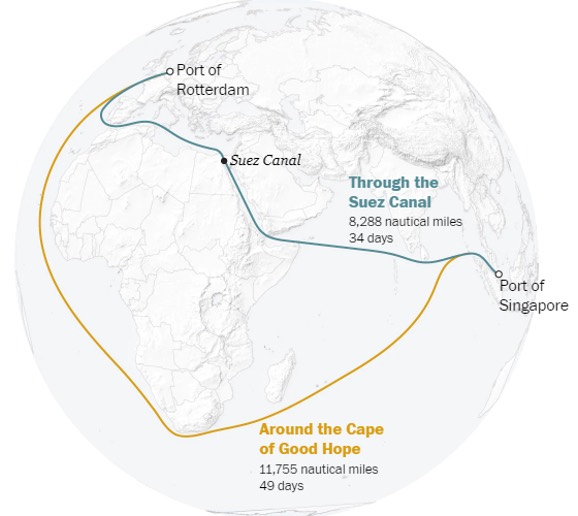April 4, 2021
Suez Canal Blockage

April 1st, 2021
Suez Canal Blockage

Investigation
Once the management of the crisis have been concluded, consistent investigations are expected to determine the official causes.
The International Maritime Organization (IMO) has received the ship’s Voyage Data Recorder (equivalent of an airplane’s black box) and launched its investigation on Tuesday 30th March 2021. At the same time, The Suez Canal Authority is also expected to start its own.
No official answers shall be stated until both investigations will be concluded. Nevertheless, during these turbulent six days, few explanations has been suggested and raised:
- Technical Issue
When the Ever Given was first grounded on March 23rd, the ship’s technical manager Bernhard Schulte Shipmanagement (BSM) officially announced that “initial investigations rule out any mechanical or engine failure as a cause of the grounding.’’
- Climate Condition
A dust storm with wind speeds reached until 40 knots have been noticed during the day of the grounding. Dust storms usually happen in April in Egypt and officially declare the beginning of a season called the khamsin. Despite arriving early this year – late March -, ship’s grounding are not witnessed every year.
- Suez Canal Location
The rescue efforts have been complicated by the fact that the grounding took place in a part of the canal where the ground was rocky and very difficult to dig. Meaning that the digging will have to be performed cautiously and early stopped to avoid any earth collapsing on to the vessel.
- The vessel itself
The Ever Given, at 400-meters long (1,312 feet) and 60-meter wide (200 feet) wide, is one of the world’s biggest ocean vessels and exactly comply to the maximum length allowed in the canal. This incident is raising concerns about whether container ships have gotten too large — and whether the Suez Canal can properly and safely handle them.
- Human Errors
The ship’s last known speed before the grounding was 13.5 knots , above than the canal’s speed limit of 7.6 knots.
Consequences
The Suez canal is one the most frequently waterway in the world. A total of about 12-13 percent of world trade passes through the Suez Canal. These six days of blockage led to tremendous impacts:

- 450 vessels were stuck, waiting or headed to the waterway. Others have diverted to the longer route around the southern tip of Africa. A delay of roughly 15 days (according to the meteorological condition) shall be forecast.
- Blockage at the canal will affect ports and docks destination with unexpected unloading schedules, leading to additional delays for producers, suppliers and consumers.
- Shipping sources said daily expenses were estimated to reach between $10,000 and $15,000 a day for each vessel and costing the global economy an estimated $400 million per hour.
- Oil prices shot up and down after the ship became stranded.
Key facts:
- 193.3 km long
- 11m depth
- Largest vessel accepted : 400m length, 240 000 tons
- Opened on November 17th 1869
- Major renovation of the canal in 2015
- Owned by Egypt since 1954 and operated bu the Suez Canal Authority
- Connect Port Said on the Mediterranean Sea to the Indian Ocean via the Egyptian city of Suez on the Red Sea
- Closed to navigation twice in the contemporary period : 1956-1957 and 1967-1975.
Sources:
- https://www.washingtonpost.com/world/2021/03/25/faq-suez-canal-ever-given/
- https://www.businessinsider.com/timeline-and-pictures-of-the-ever-given-stuck-suez-canal-2021-3
- https://www.straitstimes.com/world/middle-east/a-timeline-of-the-suez-canal-blockage-and-the-rescue-effort
- http://www.xinhuanet.com/english/2021-03/25/c_139835995.htm
- https://www.aljazeera.com/news/2021/3/29/ever-given-turned-80-percent-in-right-direction-live-news